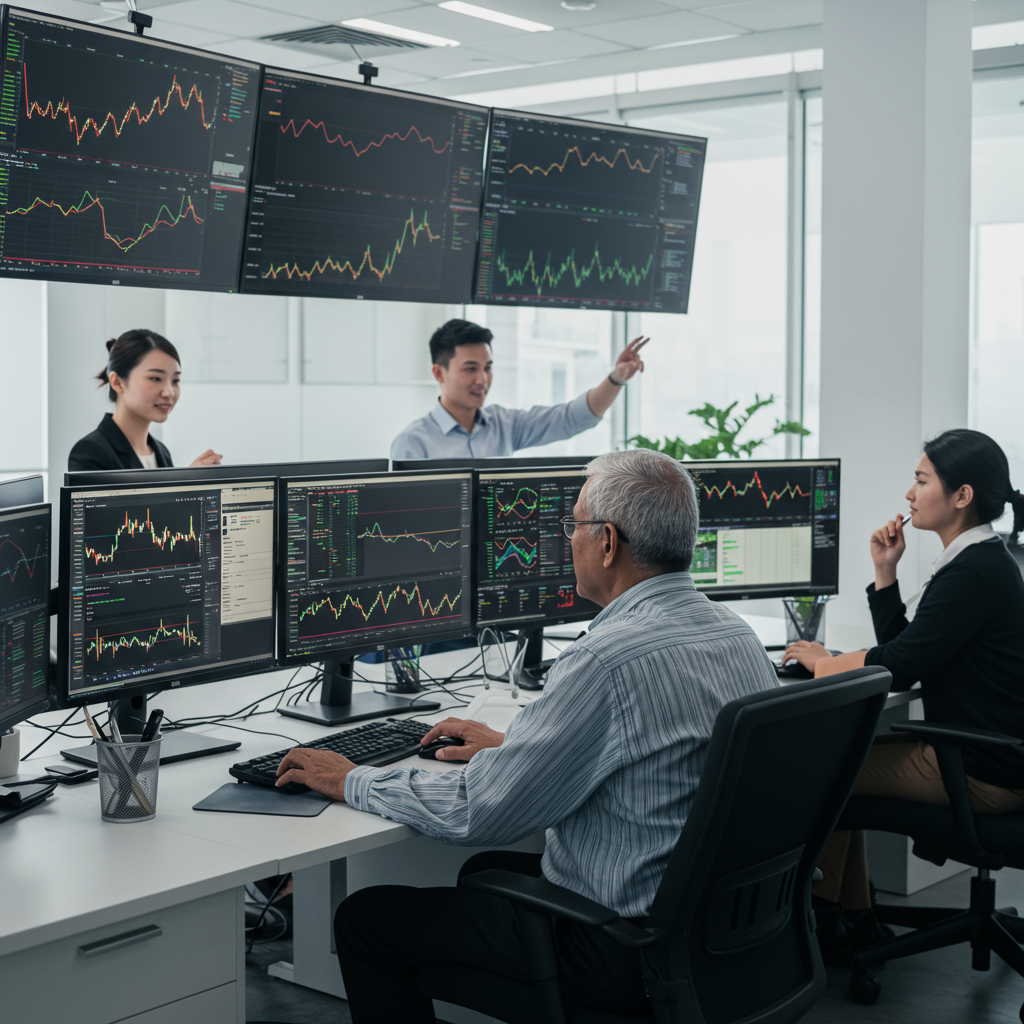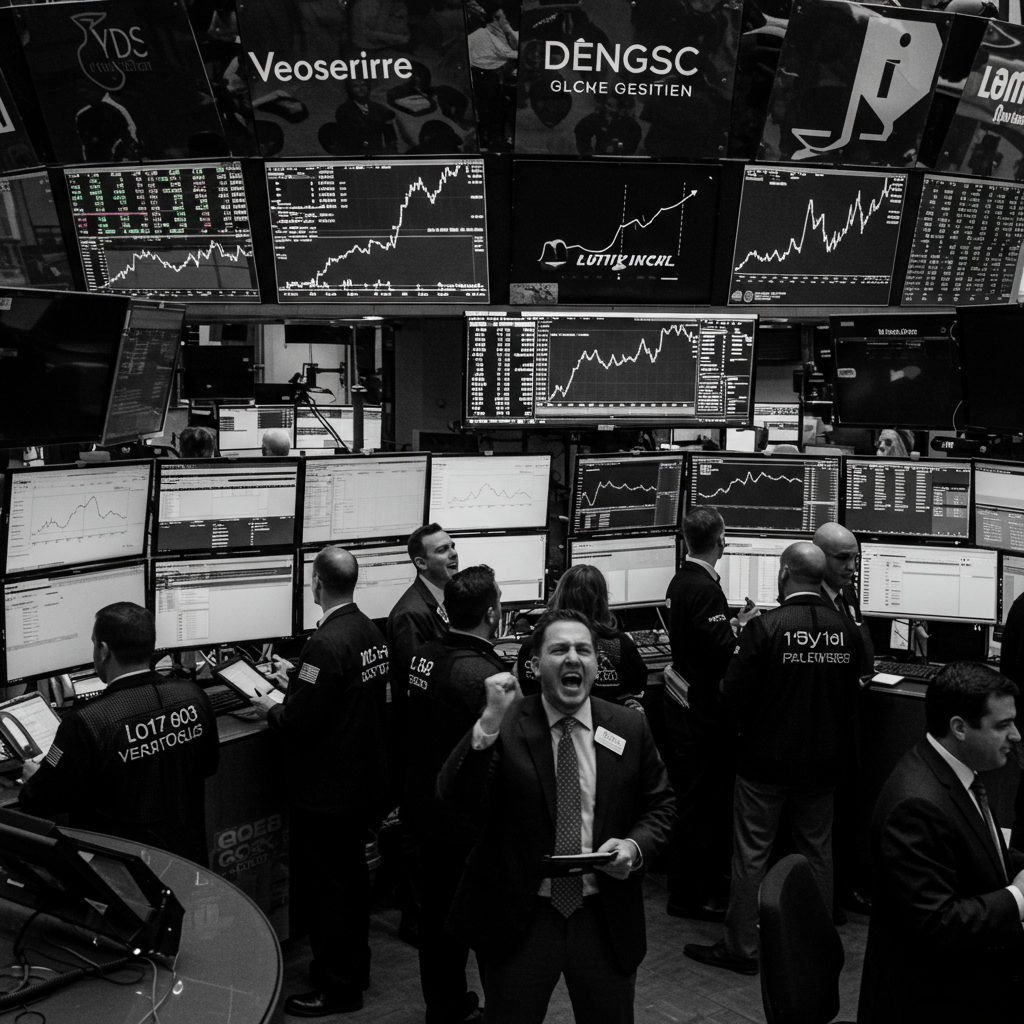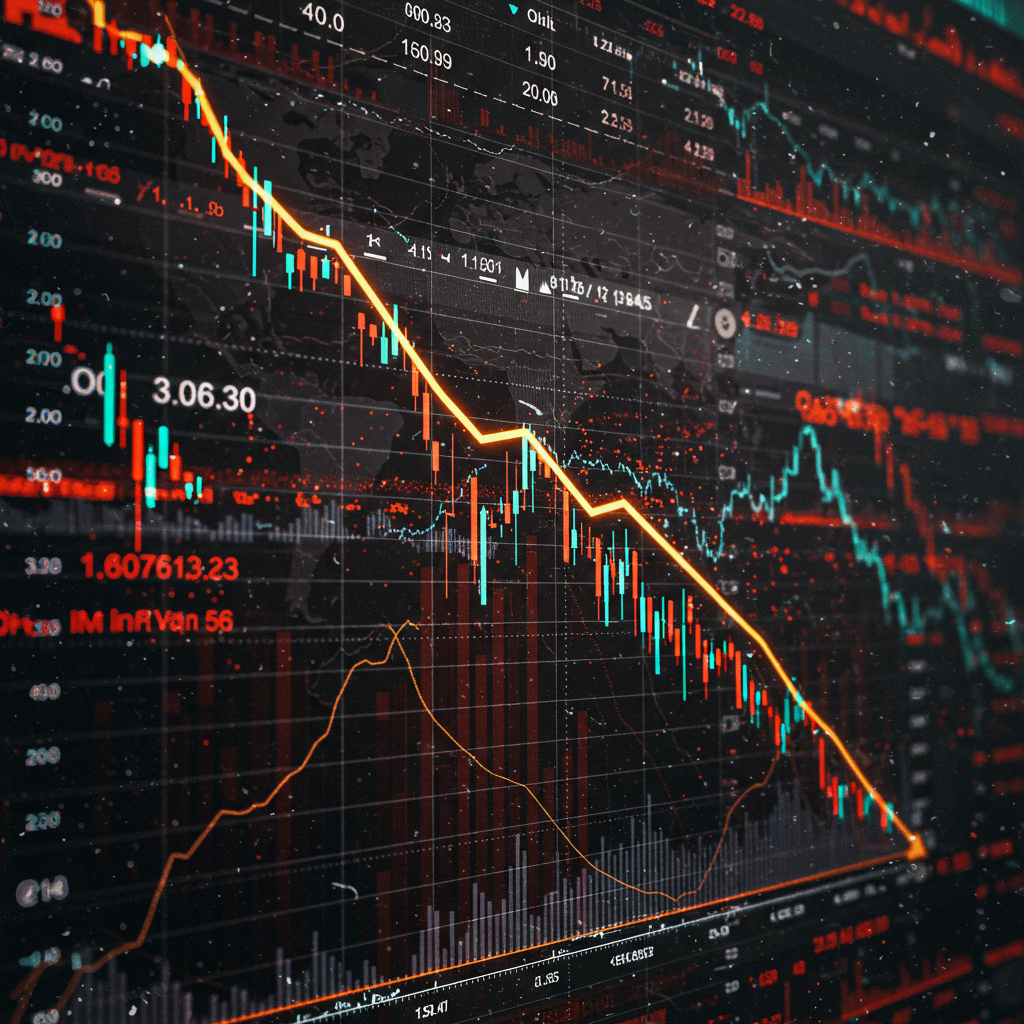Global individual investors engaged in unprecedented levels of stock market activity during the first six months of 2025, trading a record-breaking $6.6 trillion in equities. This surge in volume reflects a period shaped by significant market swings, geopolitical events, and evolving economic forecasts. Understanding the dynamics behind this massive trading volume is crucial for grasping current market trends and investor sentiment heading into the latter half of the year.
retail Investors Drive Record Trading Volume
The first half of 2025 saw retail investors globally collectively trade a staggering $6.6 trillion worth of stocks. This sum represents a new peak in trading activity for this segment of the market. Fueling this surge were diverse factors including persistent market volatility, ongoing international conflicts, and shifting political landscapes.
Data from market analytics providers indicates that the total volume was almost evenly split between buying and selling. Individual investors purchased approximately $3.4 trillion in stocks, while simultaneously selling around $3.2 trillion over the six-month period ending in June 2025. This high turnover underscores a dynamic trading environment where investors actively adjusted their portfolios in response to changing conditions.
Among the securities experiencing the highest levels of retail investor interest during this period were major tech and growth stocks. These included the chip manufacturing giant Nvidia (NVDA), electric vehicle innovator Tesla (TSLA), and data analytics specialist Palantir Technologies (PLTR). Their prominence suggests that retail investors remained focused on high-profile, potentially high-growth companies despite the broader market uncertainty.
What Drove the Unprecedented Retail Activity?
Several significant factors converged in the first half of 2025 to create an environment conducive to increased retail trading. A backdrop of global economic uncertainty, partly driven by announcements regarding trade tariffs and geopolitical tensions, prompted rapid shifts in market sentiment.
Periods of heightened fear can often lead to increased trading as investors react to news and attempt to protect or reposition their capital. This was particularly evident during April and May 2025. Major announcements concerning potential tariffs reportedly rattled global markets and triggered concerns about a potential trade war and economic slowdown. This specific period saw a dramatic uptick in retail buying and selling as individual investors navigated the turbulent waters.
Initial fears eventually eased as diplomatic efforts led to trade agreements and a de-escalation of some retaliatory tariff threats. Despite this resolution, market data suggests that many retail investors found the spring of 2025 to be one of the most challenging investment climates they had ever encountered. However, as the immediate trade war concerns subsided, a more bullish sentiment began to emerge among these investors.
Navigating Volatility and Opportunity
High trading volume during volatile times reflects various retail investor strategies. Some investors may have been panic selling to cut losses, while others could have been buying dips, anticipating a market rebound. The substantial buy and sell volumes confirm that large numbers of individuals were actively entering and exiting positions, rather than simply holding through the turbulence.
This level of activity highlights the increasing influence and participation of retail investors in modern financial markets. Armed with accessible trading platforms and real-time information, individual traders are now capable of impacting market movements and contributing significantly to overall liquidity. The $6.6 trillion figure is a stark reminder of this growing power.
The concentration of trading in stocks like NVDA, TSLA, and PLTR is also telling. These companies are highly visible, frequently in the news, and represent sectors often favored by growth-oriented retail investors. Their volatility, while potentially risky, also offers significant potential upside, attracting traders looking to capitalize on price swings.
Deep Dive: Investor Focus on Key Stocks
The consistent trading volume observed in Nvidia, Tesla, and Palantir shares underscores their popularity within the retail investor community. These stocks often generate significant discussion across online forums and social media, contributing to their trading momentum.
Nvidia, in particular, remained a focus for many investors. Market analysis shows that professional analysts held a predominantly positive outlook on NVDA stock during this period. Based on ratings from numerous Wall Street analysts, Nvidia maintained a consensus “Strong Buy” rating. This rating was supported by a strong majority of Buy recommendations compared to Hold and Sell ratings provided within recent months.
The analyst price targets for NVDA shares implied potential upside from the price levels seen in the first half of 2025. For instance, an average price target projected by analysts suggested a notable percentage increase from the stock’s then-current trading price. Such positive analyst sentiment can often influence retail investor decisions and contribute to sustained trading interest in a stock.
It is important for individual investors to conduct their own research and consider their risk tolerance before making investment decisions, even for stocks with positive analyst coverage. Market dynamics can change rapidly, and past performance or analyst ratings are not guarantees of future results.
Implications of High Retail Engagement
The record $6.6 trillion in retail trading volume has several implications for the broader market:
Increased Volatility: High retail participation can sometimes amplify market swings, especially in heavily traded stocks.
Faster Information Dissemination: Retail platforms and online communities facilitate rapid reaction to news, potentially leading to quicker price adjustments.
Shift in Market Structure: The growing volume traded by individuals means retail flow is becoming an increasingly important factor for institutional traders to consider.
Risk Awareness: While access is easier, high-volume trading, particularly day trading, carries significant risk and is not suitable for all investors.
Understanding the drivers behind this record volume helps illuminate the evolving landscape of stock market participation. It shows that major global events and economic policy announcements now have a direct and measurable impact on the trading behavior of millions of individual investors worldwide.
Frequently Asked Questions
What specific global events contributed to the record retail trading volume in H1 2025?
The significant increase in retail stock trading volume during the first half of 2025 was primarily driven by a combination of factors, including elevated market volatility, ongoing geopolitical conflicts in regions like Europe and the Middle East, and political tensions within the United States. Specifically, announcements concerning potential trade tariffs in April and May reportedly caused significant market reactions, prompting many retail investors to actively buy and sell shares.
How did the record retail trading volume in H1 2025 break down between buying and selling?
During the first six months of 2025, retail investors collectively bought approximately $3.4 trillion worth of stocks and sold around $3.2 trillion worth of stocks. This nearly equal split between buy and sell volume indicates a high level of activity and turnover in retail portfolios as investors reacted to market conditions and news events throughout the period, resulting in a total traded volume of $6.6 trillion.
For individual investors, how does high retail trading volume in popular stocks like NVDA, TSLA, and PLTR affect investment decisions?
High trading volume driven by retail investors in stocks such as NVDA, TSLA, and PLTR can contribute to increased price volatility and faster reactions to news. While this presents potential opportunities for active traders, it also heightens risk. Long-term investors should focus on company fundamentals and their own investment goals rather than being solely swayed by trading trends or popular sentiment, although understanding these dynamics can provide valuable market context.
Conclusion
The first half of 2025 will be remembered for the unprecedented $6.6 trillion in stock trading volume executed by retail investors globally. This record reflects a period of significant market challenges and opportunities, spurred by geopolitical events and economic policy shifts. The high level of engagement in stocks like NVDA, TSLA, and PLTR highlights retail investors’ continued focus on prominent growth companies. As markets move forward, understanding the impact of this powerful investor segment remains crucial for anticipating future trends and navigating the investment landscape.



